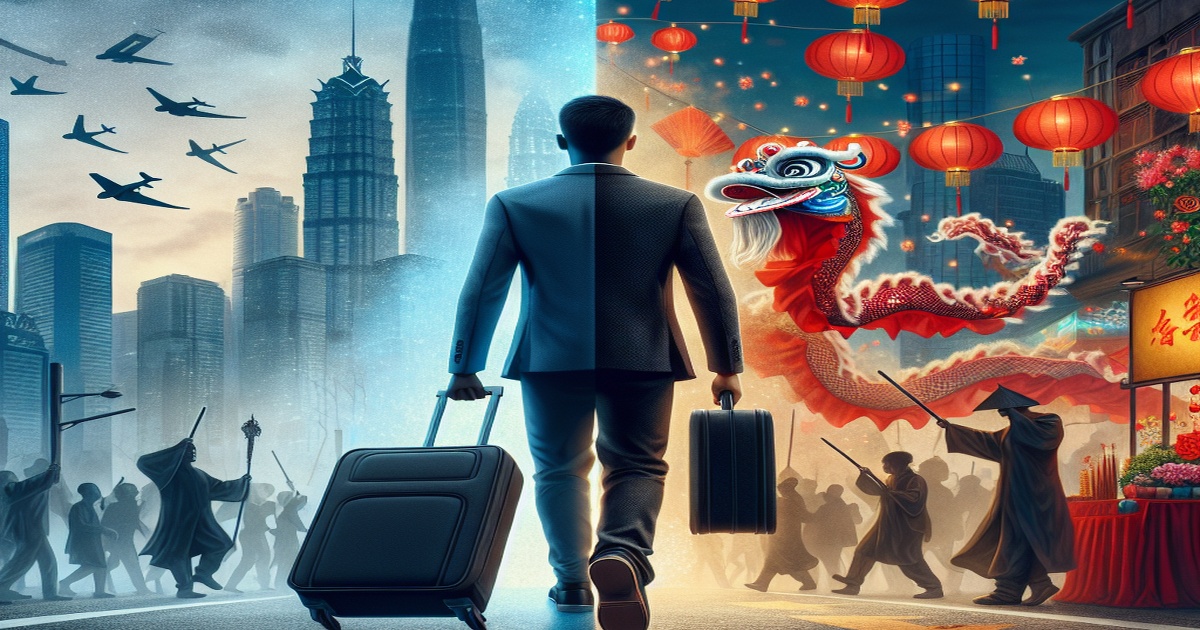Sabah El Badaoui from Morocco arrived in China for a business trip and unexpectedly found herself caught up in the vivid celebrations of the Spring Festival. Initially on a short visit, she soon began exploring culture-rich regions such as Shanghai, Suzhou, and Anhui, where she discovered that every town, no matter how small, showcased its own unique customs during Chinese New Year.
Data reveals that a number of townships and villages have recently opened their doors to foreign tourists due to relaxed visa policies, resulting in a notable increase in international visitors. This shift has paved the way for emerging cultural destinations like Quanzhou in Fujian with its traditional hairpin festival; Chaozhou in Guangdong, celebrated for its dynamic Yingge folk dance; and Zigong in Sichuan, known for its enchanting lantern displays. Many foreign travelers now prefer smaller cities and rural areas for a more authentic and immersive cultural experience.
In regions like Northwest China's Xinjiang Uygur Autonomous Region, tourists have enjoyed a unique blend of winter sports and festive New Year activities. Reports have shown a dramatic rise in international arrivals, particularly in cities like Urumqi, which has become one of the leading destinations for ice and snow tourism. Local tourism authorities have improved the ticket-booking process and payment options using valid IDs, making traveling smoother for international visitors.
Elsewhere in Central China's Hubei province, cities such as Chibi have experienced a boost in interest as visitors seek out local cuisine, rich historical narratives, and traditional folk performances. Immersed in the traditions of the Three Kingdoms period and influenced by a deep appreciation of intangible cultural heritage, many international guests — notably from Southeast Asia — have been drawn to ancient towns like Yangloudong.
Experts note that universal themes such as family reunion, gratitude, and renewal give the Spring Festival its global appeal, transcending cultural boundaries. This resonates with international visitors, who come away with a nuanced understanding of Chinese culture emphasized through both its vibrant visual symbols and the deeper, universally relevant messages of the festival.
In response to the growing number of inbound tourists, numerous Chinese cities have rolled out various services aimed at making the visitor experience smoother. Enhancements include expanding digital payment solutions, providing multilingual assistance, and streamlining entry procedures at major attractions. These improvements are evident in various regions, with cities like Wuxi becoming increasingly popular among visitors from nearby countries, solidifying China's position as a dynamic destination that blends modernity with ancient cultural traditions.







9 Comments
Rotfront
“Every sentence seems designed to make China look perfect. There’s no nuance or honest critique here.”
Karamba
“I’m not convinced; it only shows the pretty side of tourism while ignoring the negative impacts on local communities.”
Matzomaster
“This article feels more like a PR piece than honest reporting—it glosses over real issues.”
Rotfront
“Sure, festivals and new policies sound promising, but what about the local residents who may be struggling with these changes?”
Karamba
“I feel this piece is biased—it only praises improvements and ignores potential problems in tourist management.”
Loubianka
“It’s hard to take this seriously when they just advertise ‘exotic’ festivals without acknowledging the downsides.”
Raphael
“This reads like a marketing brochure for China’s tourism rather than an objective news article.”
Matzomaster
“The narrative seems overly polished. Where’s the discussion about challenges like overtourism or cultural commodification?”
BuggaBoom
“I’m tired of articles that only highlight the bright side without mentioning the costs, socio-cultural or otherwise.”